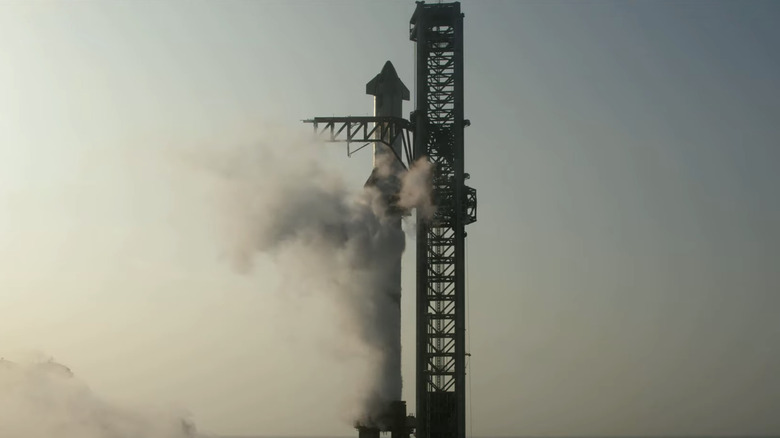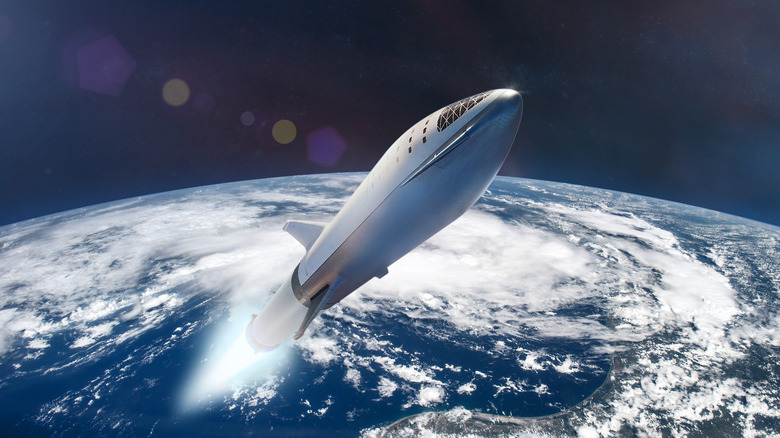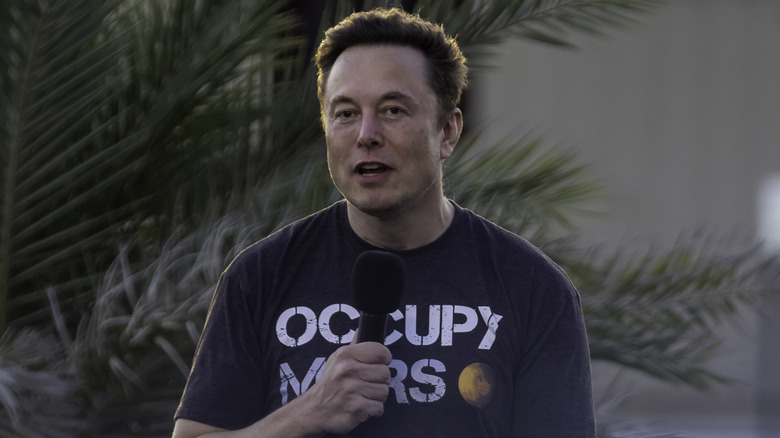SpaceX Starship's First Test Flight Was A Fiery Success
SpaceX attempted the first flight test of its ambitious Starship rocket, and it was a mixed success. While the lift-off went smoothly and most of the Raptor engines performed as expected, the whole assembly fell apart after a fiery explosion a few minutes into its flight. Touted to be the first integrated flight of the booster and the Starship vehicle, SpaceX had hoped to reach the orbit, but didn't quite achieve that goal with its mega project, which also has NASA's Artemis hopes riding on it for missions to the Moon, the Martian surface, and beyond.
According to team members on the official SpaceX webcast, the stage separation wasn't successful. Soon after, the rocket started its descent and began spiraling in the air. Following the Stage 1 burnout and failed separation, the Starship underwent what the team calls a "Rapid Unscheduled Disassembly," or RUD, for short.
Congrats @SpaceX team on an exciting test launch of Starship!
Learned a lot for next test launch in a few months. pic.twitter.com/gswdFut1dK
— Elon Musk (@elonmusk) April 20, 2023
SpaceX's team says they haven't zeroed down on the technical reasons that caused the explosion, but the data collected might offer an insight into the setback and will help improve the reliability of SpaceX's flagship project in its upcoming tests. SpaceX owner Elon Musk tweeted that the team "learned a lot for [sic] next test launch in a few months." Even though the uncrewed flight failed to reach space, it didn't result in any launchpad damage and the vehicle cleared the launch tower, which itself is being hailed as a first-of-its-kind success for the mega project.
Failing, learning, improving
SpaceX claims the objective behind today's test is to "inform and improve the probability of success in the future" as SpaceX goes ahead with refining the ascent and landing aspects. The whole assembly, which includes the Super Heavy rocket booster and the Starship vehicle at the top, stands at nearly 120 meters tall. However, this won't be the first Starship to tango with flames. In 2021, a well-publicized Starship landing attempt ended up in an inferno after a successful liftoff. With its latest test, SpaceX was hoping for a clean stage separation before the Starship vehicle splashed off into the Pacific Ocean.
As if the flight test was not exciting enough, Starship experienced a rapid unscheduled disassembly before stage separation
— SpaceX (@SpaceX) April 20, 2023
That didn't happen, just as the SpaceX team had predicted before the test, but maintains that "the goal was to gather the data." Data collection is important, especially for a company like SpaceX, which believes in the mantra of "fail fast, learn faster." There's a storied history behind SpaceX failing repeatedly with its initial Falcon reusable rocket system.
Despite all initial skepticism, the company eventually succeeded at mastering the art of vertically landing back its rockets, a feat no other space agency has managed to replicate to date on a commercial scale. "With a test like this, success comes from what we learn, and today's test will help us improve Starship's reliability as SpaceX seeks to make life multi-planetary," says SpaceX. It would be interesting to see what targets SpaceX has set for the next round of Starship tests in the coming months.
The explosion should reduce the risk of future disasters
SpaceX probably isn't bluffing when it claims the explosion isn't a bad thing. Humans tend to be pretty good at learning from mistakes, and large space-faring corporations owned and staffed by humans are no different. At a basic level, a "test" is a practice run to see what works and what doesn't.
That's exactly what happened here: SpaceX discovered something doesn't work in a big way. Scientists working for the company will undoubtedly gather data to analyze and work out exactly what went wrong, and how to prevent it from happening again.
With a test like this, success comes from what we learn, and today’s test will help us improve Starship’s reliability as SpaceX seeks to make life multi-planetary
— SpaceX (@SpaceX) April 20, 2023
Following the explosion, SpaceX was quick to tweet that "with a test like this, success comes from what we learn," and that is true to a large extent. SpaceX space operations engineer Siva Bharadvaj stated in the wake of the launch that "any and all of the data that we collected during the test is going to help us with further development of Starship, and it's going to improve the vehicle's reliability as SpaceX seeks to make life multiplanetary."
While this is an expensive failure, it is also a necessary one that has likely saved several human lives in the long run. Beyond that, footage is still being shared by Musk and SpaceX, showing unique angles of the ship's launch, and treating fans to slow-motion videos of the lift-off. Of course, with Musk, he may know details behind the scenes that paint a bigger picture than his tweets.
Musk issued an expected response, too
Following the actions of Elon Musk over the last few years, it's easy to notice several patterns. One thing the billionaire tends to do when things aren't going well is make light of the situation through memes or throwaway comments. The recent SpaceX failure was no exception.
Beyond SpaceX's light-hearted description of the explosion, Musk posted a tweet several days later joking how it's "hard to believe Starship actually did launch on 4/20." This could suggest that — like SpaceX — Musk is ignoring how the test ended, and is instead focusing on the successful "launch" portion now that the dust has settled.
Hard to believe Starship actually did launch on 4/20 lol
— Elon Musk (@elonmusk) April 24, 2023
However, all of this is nothing new, and Musk often cracks jokes in response to serious situations. He even did so following a similar situation two years ago, when another SpaceX Starship exploded shortly after launch. While only Musk himself knows exactly how he's feeling, there are two schools of thought: Either this is an attempt to look unfazed at what is a frustrating failure, or the world's second-richest man is simply too affluent to see this incident as devastating.


